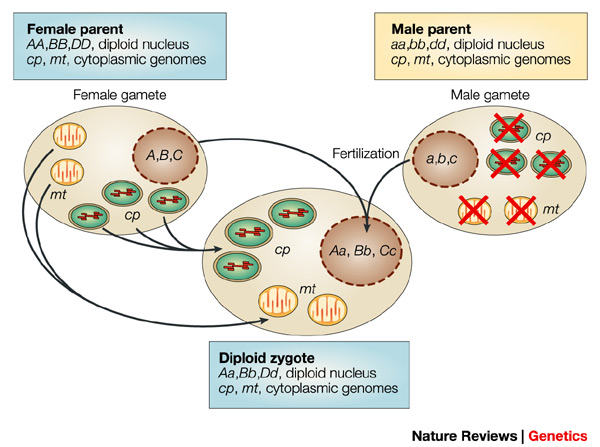Inheritance of cytoplasmic and nuclear genes
Keywords
Flag Inappropriate
Delete Content

Inheritance of cytoplasmic and nuclear genes
The nuclear genomes of most higher eukaryotic organisms are diploid and are characterized by disomic inheritance and sexual reproduction. So, nuclear genes come in allelic pairs that are often subtly different from each other. Gametes that result from meiosis are haploid and carry only a single allele (in this example, alleles A, B and C from the female parent and a, b and c from the male parent). The zygote that results from fertilization inherits one nuclear allele of each gene from each parent (that is, at the three example loci, it is Aa, Bb and Cc). By contrast, the cytoplasmic organelles characteristically contain multiple, homogeneous genomes that are usually inherited from one parent only (in this example, and most commonly, the female parent). In tobacco and many other plants, the mitochondrial and chloroplast genomes are specifically degraded before fertilization (red crosses). There are many exceptions to this common inheritance pattern of genes in mitochondria and chloroplasts.




















Comments
CloseComments
Please Post Your Comment